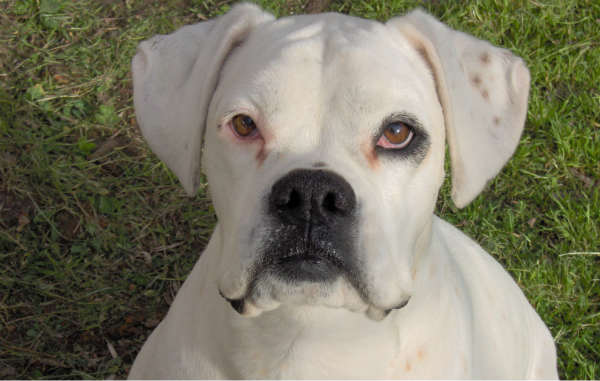
This post may contain affiliate links. We are compensated for referring customers to our affiliate partners.
Positive reinforcement dog training is when you reward a dog for a desired behavior. Some dog trainers use positive reinforcement almost exclusively. Historically, professional dog trainers haven’t put much emphasis on positive reinforcement. Recently, however, positive reinforcement techniques have become commonplace in the dog training world. And rightfully so! When the right techniques are used, positive reinforcement is very effective. This page will go over some of the basics to help you get started in using positive reinforcement dog training. Once you learn how to properly use this method to train your dog, read up on negative reinforcement dog training as well. From there, you can decide for yourself how much of each method you’d like to use to train your dog.
Alright, let’s get started!
Our Recommended Positive Reinforcement Dog Training Books
- The Power of Positive Dog Training
- The Complete Positive Reinforcement Dog Training Series: Books 1 to 4
- Training the Best Dog Ever: A 5-Week Program Using the Power of Positive Reinforcement
- Don’t Shoot the Dog!: The New Art of Teaching and Training
Reward Based Training
Positive reinforcement dog training is fun for both dogs and humans because the dog gets rewarded for doing the right thing. The reward can come in the form of praise, playing with a favorite toy, or by giving your dog anything else he or she loves. Obviously, the most common reward is a small treat. Dogs will do about anything for even a tiny piece of delicious food! I prefer using something healthy, yet delicious, like grilled chicken or steak. My dog also loves string cheese. Whatever you decide to use, make sure the treat isn’t too big. Something the size of a pea is usually more than enough to motivate a dog if you’re using something yummy enough. And don’t worry, eventually you won’t need treats at all. When you first get started, though, you’ll definitely want something super motivating for your dog and a piece of food is usually just the ticket.
Communicating With Energy
In addition to giving your dog a small treat, you’ll want to really portray positive energy. Dogs have an amazing ability to “feel” what you’re feeling. They can sense your energy and they draw on that. When your dog does something correctly, really get into it with your dog! Make everything super exaggerated. Say “YES!” in a really upbeat way. You don’t need to draw it out for any lengthy period of time, but be certain your dog knows that you’re happy.
Timing And Repetition
When training your dog using positive reinforcement, it’s very important to have great timing with your rewards. Your dog has to know exactly what behavior caused the positive response from you. In order to achieve this, you must use some sort of signal to let your dog know when a desired behavior was performed. Some trainers use hand signals, some use audible signals such as saying “yes!” or “good!” in an upbeat voice, and others use a special device called a clicker (check out the clicker training guide).
In order to make this signal effective, your dog has to know that anytime the signal occurs, something really good is about to happen, like a treat is on the way or a favorite toy is about to make an appearance. That means the first step in using positive reinforcement dog training is to teach your dog that signal. Once your dog understand the signal, you can “mark” a behavior. For example, if you want your dog to learn the command “sit”, you can start by giving your signal immediately after your dog sits down. The dog will learn that when he or she sits, a treat is rewarded.
Positive Reinforcement Dog Training Techniques
Being A Pack Leader – Before you begin using any dog training technique, you must have a solid understanding of how dogs communicate in the wild. Dogs naturally like to stay in packs and within each dog pack is a leader. The pack leader communicates with the rest of the pack and sets the ground rules. If your dog doesn’t see you as a pack leader, you will have great difficulties using positive reinforcement training. This article will help explain how you can be a fair, yet firm leader.
Guide To Clicker Training – This is by far the best method of positive reinforcement dog training available today. When used effectively, clicker training can yield some amazing results from the very first day of training. Not only is this form of training highly effective, it’s humane and dogs of all breeds absolutely love it! If you have any interest in using positive reinforcement training with your dog, this guide is a must read.
